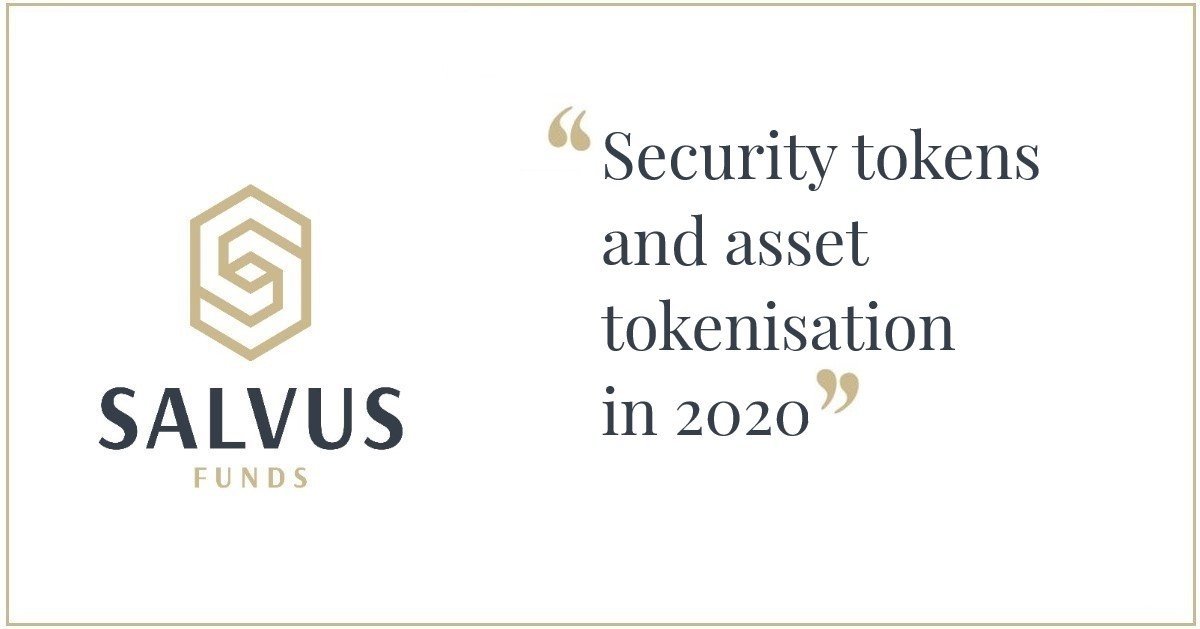Security Tokens and Asset Tokenisation in 2020
The cryptocurrency market has gone from extremely hot to falling out of favour a number of times with its spectacular rallies and crashes. What has only grown in acceptance and support is the blockchain – the technology being tipped as one of the most reliable candidates to solve several challenges or significantly improve on existing practices.
The Blockchain explained
A blockchain is a network of computers that maintains a single source of truth for all the stakeholders in the network. This is because all transactions on a blockchain are recorded and validated on a distributed ledger that is immutable, cryptographically secure, and accessible for audit by all parties. Blockchains use digital tokens to represent an underlying asset. In the same way as paper money or paper certificates or paper property deeds, a token on a blockchain can be bought, sold, and traded.
Smart contract-managed tokens are especially suited for issuing and managing securities. The smart contracts digitally facilitate all required corporate and regulatory actions with automated, mathematical precision, which allows for increased efficiencies, cost savings, and regulatory compliance. This type of tokens is what we call security tokens.
The digital assets called security tokens
Beyond being a buzzword for nearly the past 2 years, security tokens are positioned to overtake the future of digital assets and we expect 2020 to be the year to mark ground-breaking innovation in this field.
Security tokens are essentially digital assets that rely on smart contracts to divide the ownership of some legal entity. They allow for asset tokenisation, which is when traditional assets are divided into tokenized assets.
Understanding the workings of this digital form of asset, from how to raise funds through compliant crowdfundings, to its overall regulation and disruptive potential – is a bold exercise as there are still many unknowns and many variables that are only now being defined.
Countries around the world are moving in a path of digitization, and all eyes are on Europe as more and more nations are developing their digitalisation strategy along a pro-crypto perspective.
Welcome the Security Token Offering (STO)
Security tokens, as we said are digital assets being managed with smart contracts. They should be seen as representing a company’s equity, providing voting rights, and the right to dividends. Therefore, apart from being digital, security tokens act the same as traditional paper securities or shares or similar certificates.
In EU by extension, security tokens fall under the MiFIDII regulations, which as discussed in previous articles are a set of rules that enhance product governance and investors’ protection. The union has been home to large crowdfundings through initial coin offerings (ICO).
ICOs came with a lot of fraud as, among other reasons, they offered utility tokens without any collateral or security law protection instead of being backed by actual assets, like the case with security tokens. Security Token Offerings (STO) do that, and as they issue true securities, digital assets, the security tokens that exist on a blockchain, we believe they will replace ICOs.
STOs lower the entry barriers faced in traditional initial public offerings (IPO) and exchanges have been set up to facilitate the trading of security tokens among investors. Thus, they diversify the investor pool and regulatory compliance will boost the general public’s confidence. Fundraising campaigns through which a company aims to receive financial backing for their vision, will be performed via STOs, giving investors security tokens in exchange for their financial support.
The absolute game-changer
As an STO retains the adaptability of decentralized financing and offers a host of unique advantages including
– 24/7 markets,
– fractional ownership of illiquid, high-value assets such as real estate or fine art,
– significantly reduced minimum investment rates and the assurances provided against fraud as compared to an ICO,
STOs and asset tokenisation are an absolute game-changer.
Technology is changing and shaping the environment around us, digitalization of traditional assets is unavoidable and even a necessary evolution. We expect security tokens and their regulated offering to disrupt the world of finance and people to pause and pay attention, in the same way they did during the cryptocurrency bull run of 2017.
It will most certainly change the way we raise money, the way the general public invests, and the way organisation and governments view digital assets. Once a property, real estate fund, a piece of fine art or financial instrument is tokenized, the advantages become obvious:
– instant transactions,
– with minimal costs,
– and, if done properly, without counterparty risk.
Again, this is an absolute game-changer for many industries, especially finance.
As it happens with anything new, or to anything that threatens to change or challenge the status quo, there will be a period of maturity and maturing. In the case of security tokens, asset tokenisation, and STOs there will be bumps in the road. We anticipate for these, as we anticipate them being handled towards a stronger framework. Regulation and the regulators, being the key component to the widespread adoption of tokenization of assets, are welcome to the discussion.
Following from then on, this young market will see the institutional appetite increase exponentially. Digital assets will see 2020 as the year to mark their ground-breaking contribution.
SALVUS is leading industry peers and other stakeholders, and our team is ready to help you connect the dots for any project you believe, or wish to examine if, asset tokenisation is the way.
The information provided in this article is for general information purposes only. You should always seek professional advice suitable to your needs.

